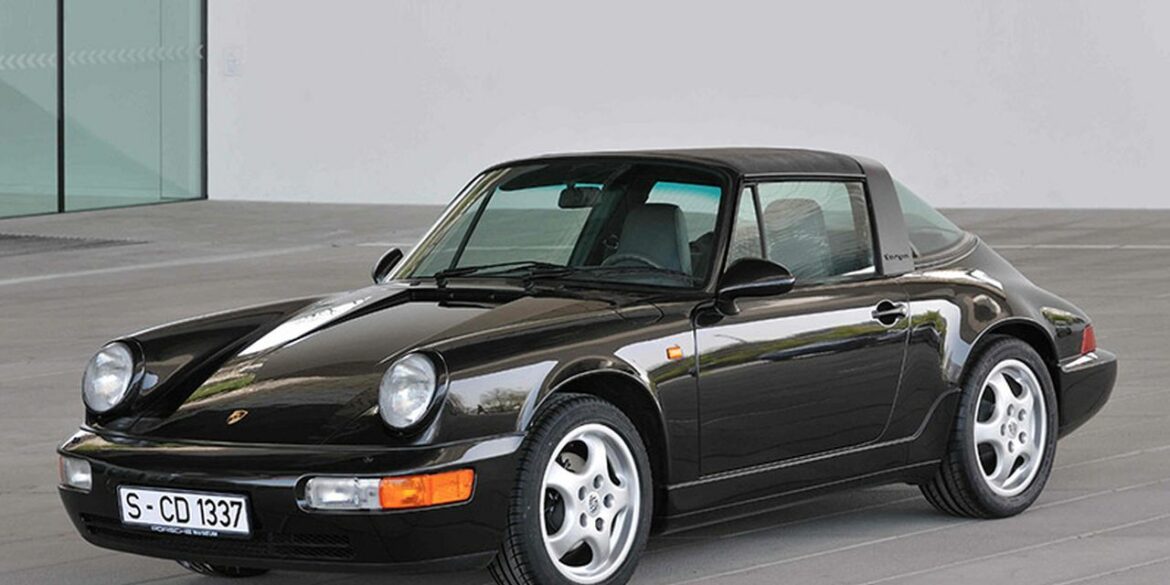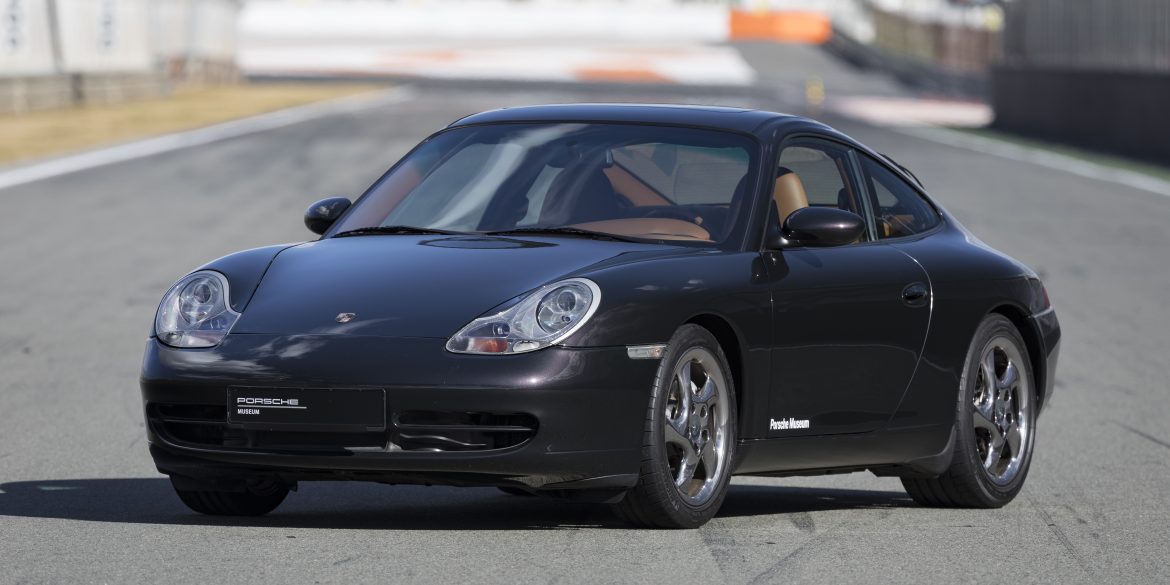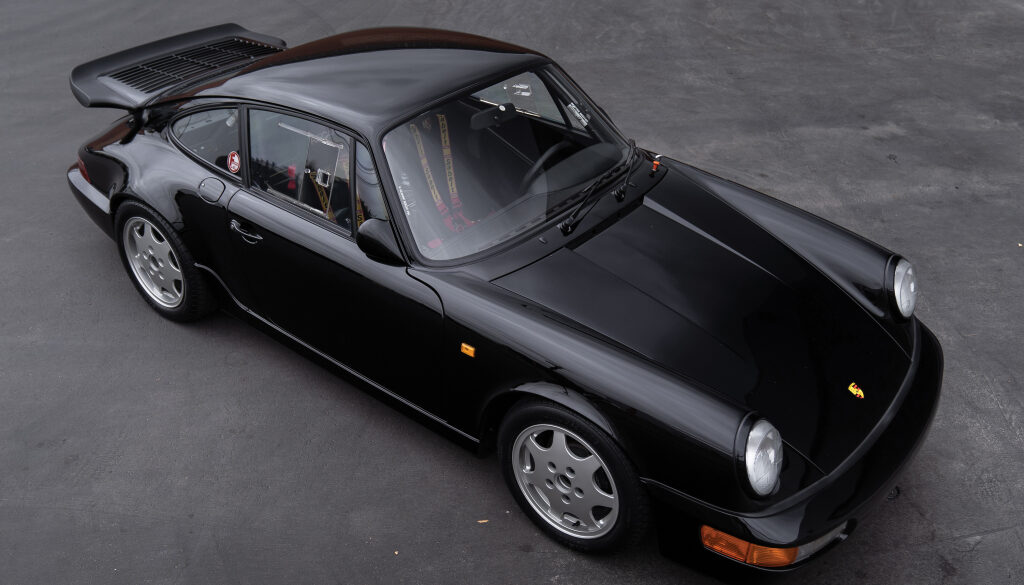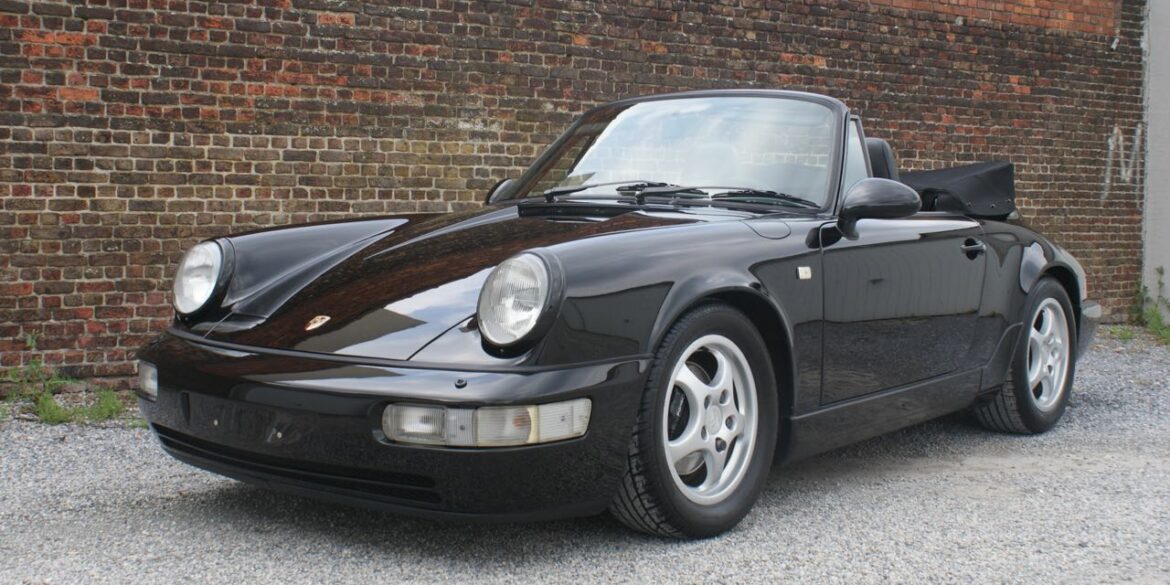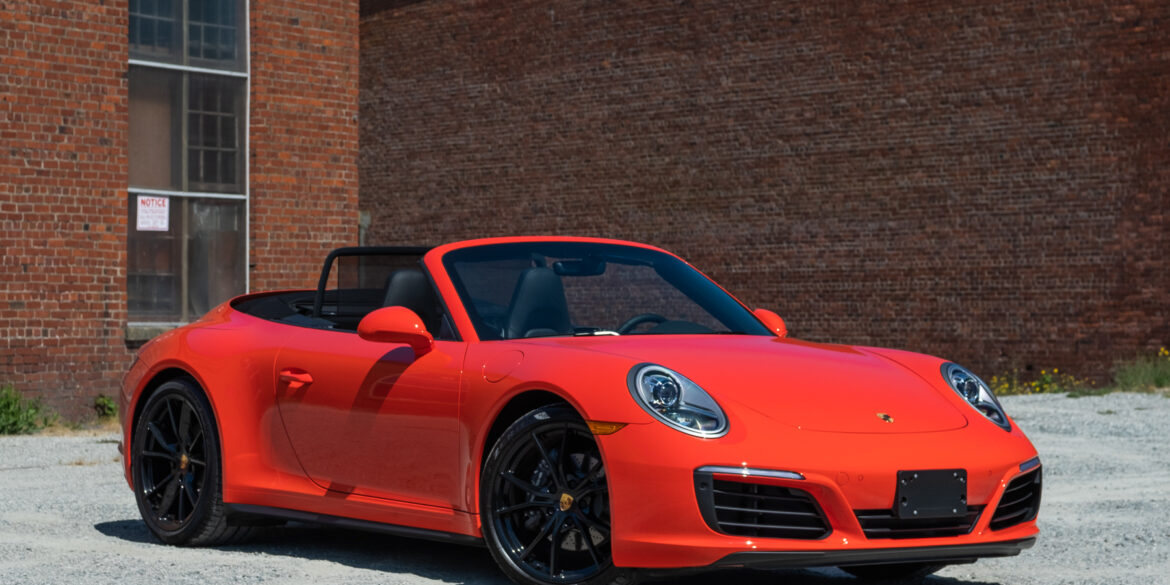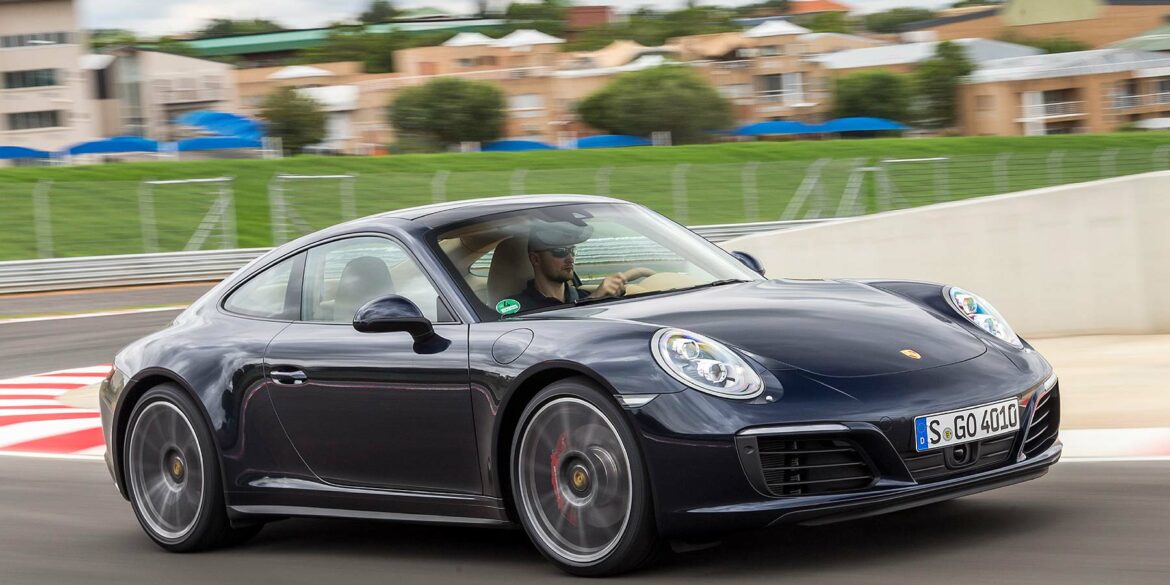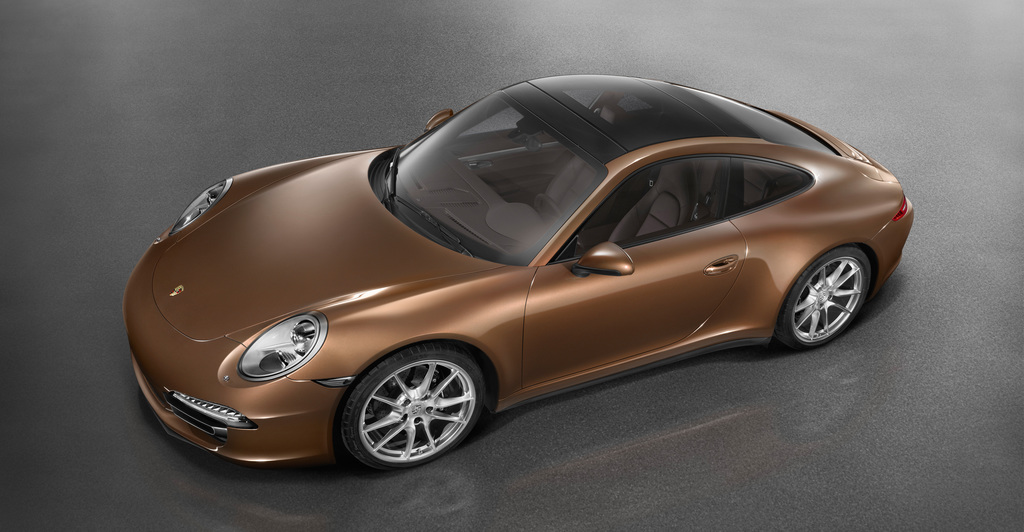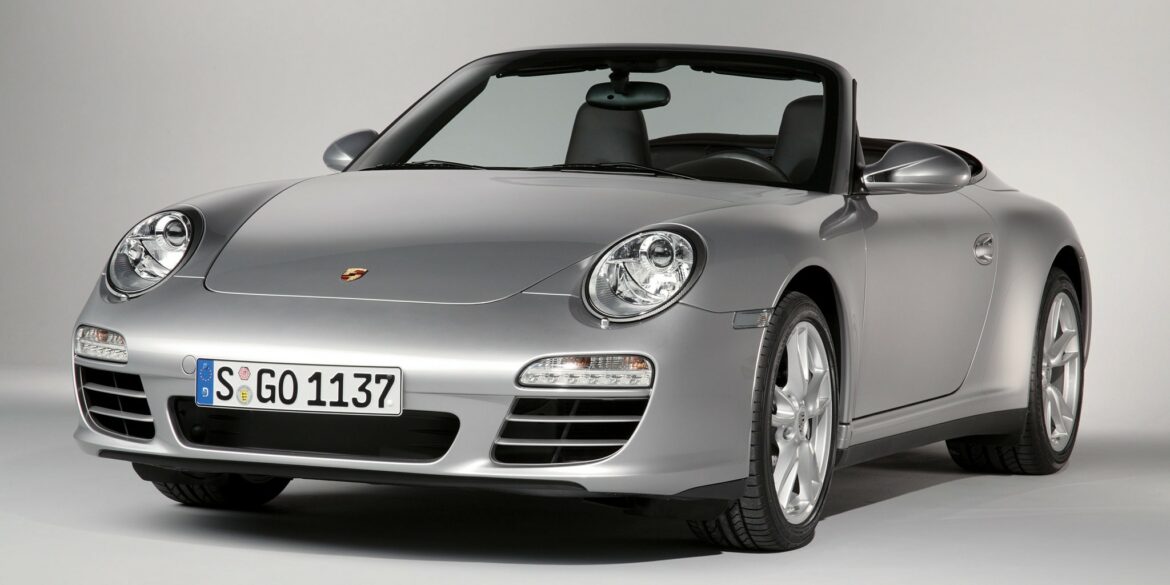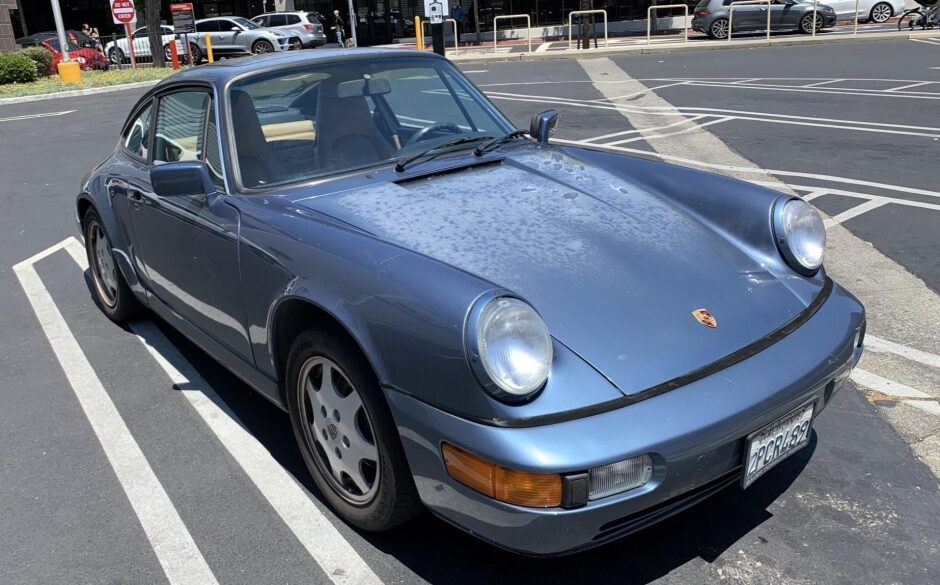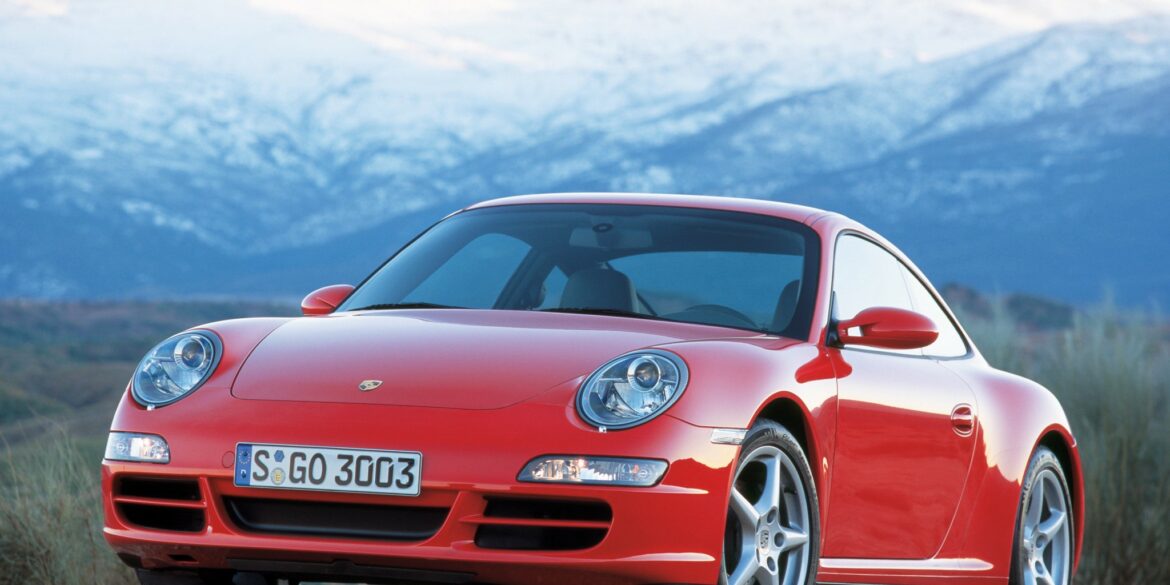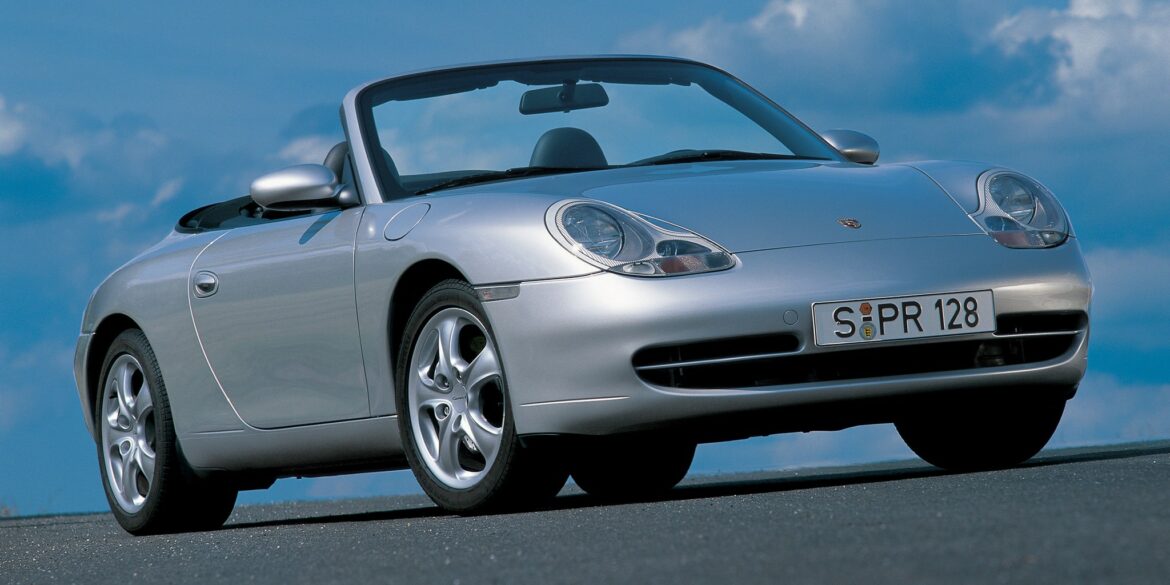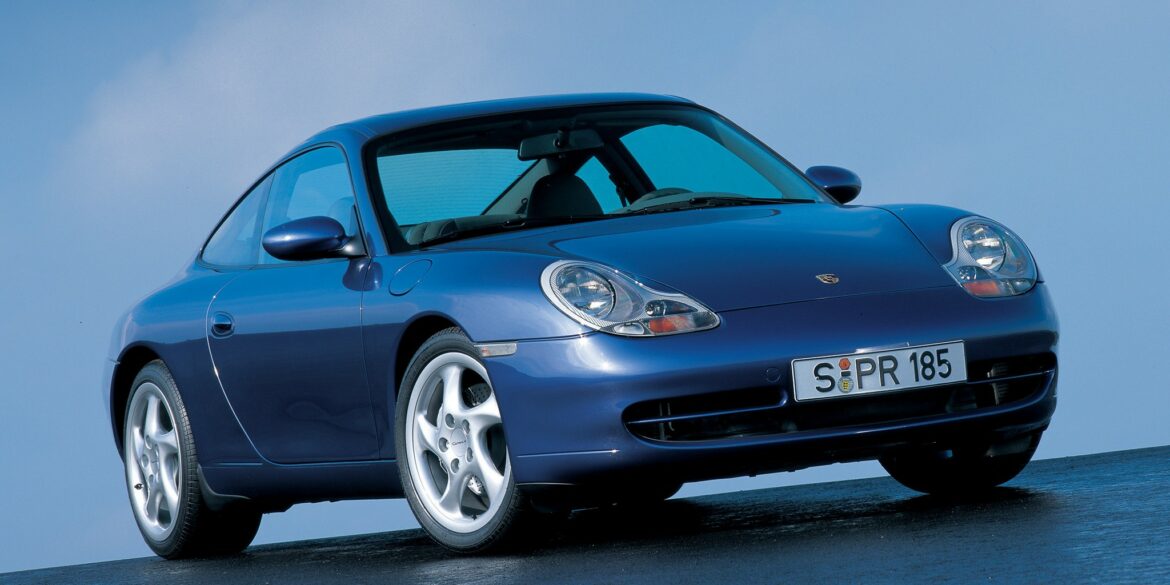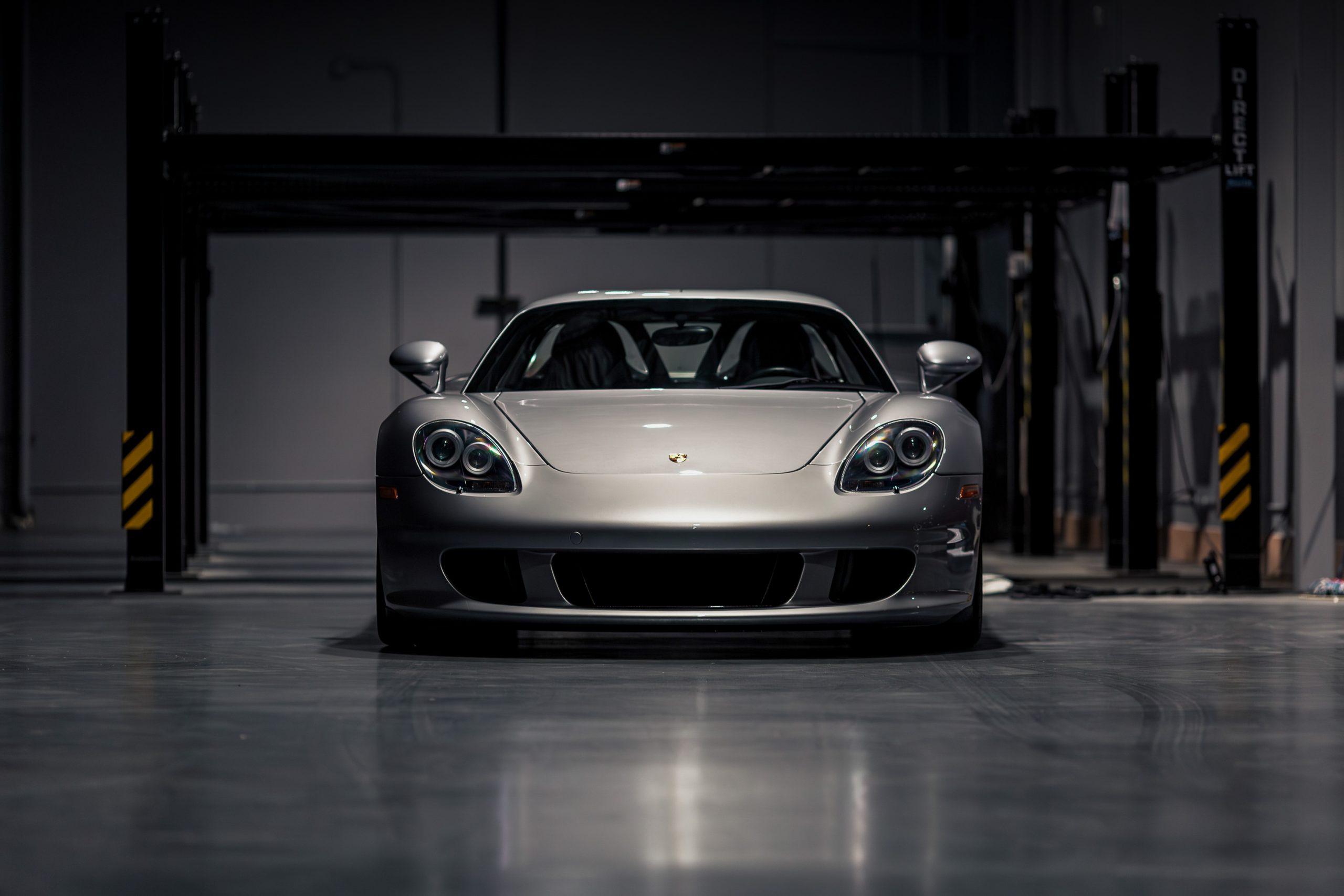Designed as a grand tourer, the Porsche Carrera 4 Cabriolet was the base all-wheel-drive version for the open-top 911 range in 2001. It offered enough comfort to be used as a daily driver, on all weather. The 996 Porsche was facelifted in 2002. Along with the coupe versions, the convertibles were reshaped also. There was not a big difference on the outside. It was the same sports-car and open-top grand tourer. The Carrera 4 Cabriolet, continued on through 2004, receiving the same updates as the Carrera, including the 3.6-liter engine.
Model year 1994. Carrera 4 Wide-Body for the U.S. Technically there is really no difference between the Carrera 4 Wide-Body and his RoW counterpart. At the front there are the for America usual black impact absorbers beside the fog lights, the frontfenders lack the side indicators, the rear bumper is equipped with the center piece with a small plate section and in the back window of a large third brake light is integrated. Significant differences, it is generally provided in the factory standard equipment.
Features like Porsche’s active suspension and the new-for-992 “wet mode” are standard on the Carrera 4 variants, but the electronically controlled limited slip rear differential (standard on the 4S), as well as ceramic composite brakes (cast iron rotors are standard). The current 911 Carrera 4 Cabriolet is equipped with PASM (Porsche Active Suspension Management). The twin-turbo flat-six has 379 hp and 331 ft lbs of torque.
The Carrera 4 is the base model 911, equipped with all-wheel drive. It starts at $109,850 for 2022, which is about $7,000 more than the standard rear-drive Carrera. Other than the additional all-wheel-drive system and the 150 odd pound increase in curb weight, the Carrera 4 is identical to its rear-drive sibling. It gets the same 379-hp, twin-turbo 3.0-liter flat-six engine. The twin-turbocharged 3.0-liter flat-six has 379 hp.
This was the last generation Targa with traditional removable Targa roof (till 991). The Carrera 4 Targa outsold the Carrera 2 Targa by 2x, making the 4 Targa much rarer and more collectible. In all, only 1,329 units were made. Overall, the Carrera 4 packed almost the same technical specifications as the Carrera 2 model. The Targa top was quite a project to take off (compared to the simple and fast cabriolet process) so be prepared to garage it all the time or spend 20 minutes every time you want to enjoy open top fun.
In 1999, Porsche celebrated the turn of the century with a special edition – the 996 "Millennium Edition". The 911 Millennium edition was based on the Carrera 4 coupé and was pretty rare, with only 911 cars made. Based on the Carrera 4, the "Millennium Edition" was limited to 911 examples and was based exclusively on the wide bodied Carrera 4. This special edition was finished in Violet Chromaflair paint, which, depending on the light changes from dark violet to light green and is quite spectacular to look at. It also got a caramel-colored leather interior and polished "turbo-twist" wheels.
The rarest 964 RS variant was the awesome 964 C4 Lightweight. Known as the 964 Leichtbau it made use of surplus parts from 953 Paris-Dakar project. A handful of specially prepared lightweight 911s were fabricated by the Porsche factory and called the Carrera 4 RS Lightweight. Carrera RS Body with 959-like AWD wizardry and more power. Lightweight masterpiece. Used parts from 953 Paris-Dakar project. The 964 C4 Lightweight was powered by the same 3.6 liter flat six as the normal 964 RS, but was fettled to produce 300 hp.
The Carrera 4 model also launched with a Cabriolet version in 1989 (for 1990 model year). The new 911 generation is introduced in Autumn 1988, but the convertible was not launched until the model year 1990. Alterations to the body include the bumpers and sill tread plates, and the 911 continues to be equipped with an automatically retractable rear spoiler and a cowled underbody. The braking system is fitted with ABS. The 911 (Type 964) also features power-assisted steering for the first time. Like the Coupe, the Cabriolet got the new all-wheel drive system.
The Carrera 4 Cabriolet gets that wonderful extra-wide body and an AWD system hooked up to its new turbocharged 3.0-liter flat-six engine. Additionally, the Carrera 4 Cabriolet gets a spate of new goodies, including a unique taillight section, and an updated infotainment system that brings the sports car’s connectivity to a whole new level. The open top Carrera 4 does a great job as an all-rounder, giving drivers the all-weather assurance of all-wheel drive and combining it with open top driving fun. Dynamically, it is up there with its coupe sibling.
Thought it carries a similar design to the new 911, the Carrera 4 has its own unique features, the most obvious being an AWD system hooked up to its new turbocharged 3.0-liter flat-six engine. The C4 gets a spate of new goodies, including a unique taillight section, and an updated infotainment system that brings the sports car’s connectivity to a whole new level. Inside the new 911 Carrera 4, there are only a few changes, the most important is the new infotainment system. With 370 hp on tap from the direct-injection, twin-turbo flat-six and all-wheel drive putting all those ponies to the ground, the C4 is more than quick enough.
The new Porsche 911 Carrera 4 unites the excellent performance and efficiency of the new generation of the 911 Carrera with the dynamic benefits of the latest version of the active all-wheel drive system PTM (Porsche Traction Management). The typical Porsche all-wheel drive with rear-focused layout in this latest 911 version guarantees maximum vehicle dynamics on a wide variety of road surfaces and in all weather conditions. The new 911 Carrera 4 models deliver traction and dynamic performance the power of four.
The 2013 Porsche Carrera 4 featured a 3.4-liter flat-six engine. It was mated as standard to a world's first seven-speed manual transmission. An automatic, PDK (dual-clutch) transmission was offered as an option. The Carrera 4 featured an all-wheel-drive torque distribution in the instrument cluster display. The most distinctive identifying feature of the 911 with all-wheel drive is still the wide rear section: compared to the two-wheel drive 911 Carrera models, the rear wheel housings 22 mm wider, and each of the rear tires is 10 mm wider.
The 2009 Porsche 911 Carrera 4 Cabriolet shares the same internal 997 model designation as its Coupe siblings. It also shares the same essential all-wheel-drive architecture, interior appointments, suspensions and drivetrains. It is an open-top sports cars that deliver the same exhilarating acceleration and dynamic response as the coupes, regardless of weather or road conditions. The Carrera 4 Cabriolet boast a unique body over their all-wheel-drive powertrains with a wide-body design.
The Type 964 911 first launch with an all wheel drive model. It was a serious investment by Porsche in updating the chassis and tech platform. The 964 Carrera 4 was powered by the M64/01 3.6 liter flat six engine, developing 250 bhp and 229 ft/lbs of torque. The objective of the C4’s all-wheel-drive system was not only to provide improved traction but also better handling, especially in the wet and on slippery surfaces. The system sends power front/back in a 31:69 ratio because a 50:50 split would have made the 964 feel like a front-wheel-drive car.
The 997 Carrera 4 was the all-wheel-drive version of the standard 997 Carrera and it arrived as a 2006 model year car (along with the 4S models). The 997.1 Carrera 4 had a3.6 L Watercooled Flat 6 (M96/05) engine that was good for 321 bhp @ 6800 rpm and 273 ft lbs @ 4250 rpm. It had a sub 5 second 0 - 60 mph hour time and a top speed of 174 mph. The transmission (six-speed manual or five-speed Tiptronic) feeds a forward propshaft that mates to a viscous coupling unit with a front differential.
2,500 cabriolets were made in the 993 Carrera 4. The 993 Carrera 4, sold between 1995 and 1998, uses the same powerplant as the standard 993 Carrera, but puts power down to all four wheels through a 6-speed manual transmission. A “Carrera 4” badge on the tail, along with silver-painted brake calipers and clear front and side turn signals, help distinguish the all-wheel drive C4 from the C2 sibling.
The 993 Carrera 4, sold between 1995 and 1998, uses the same powerplant as the standard 993 Carrera, but puts power down to all four wheels through a 6-speed manual transmission. A “Carrera 4” badge on the tail, along with silver-painted brake calipers and clear front and side turn signals, help distinguish the all-wheel drive C4 from the C2 sibling. Approximately 4,700 coupes and 2,500 cabriolets were made. It was replaced by the Porsche 911 Carrera 4 (996 generation) in 1999.
The 996 Cabriolet was introduced in March 1998 at the Geneva Motor Show. The 996 Cabriolet was long ready (remember, it was tested already in 1995), but for marketing and production-related reasons it was launched in 1998 as a 1999 model. While the evolution with the 911 coupe was questionable from 993 to 996, the real evolution came with the cabriolet. In USA - the biggest market - 911 Cabriolets outsold the Coupés. The all-wheel-drive system provides between 5-40% of torque to the front wheels depending on the situation.
Since 1989, the rear-wheel-drive Carrera has always been accompanied by an all-wheel-drive Carrera 4, and the 996 was no different. Overlapping with the last year Carrera 993'S, the 996 Carrera 4 represented two major changes for the venerable 911 lineage: a water-cooled flat-6 engine replaced the air-cooled engine used in the previous 911 model, and the body shell received its first major re-design. Engine was 3.4 L and power was 296 hp featuring a change to an "integrated dry sump" design and variable valve timing.






